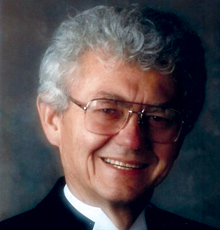
A cursory reading of relevant senior living trade journals suggests their minimal use of the term “transformational.” Several of us for years have used a matrix of four-group criteria relating to that term as the basis for improving leadership via communication and promising employees in business and the healthcare industry. Background to the term and the assessment instrument applicable to the senior involvement area is our structure.
Interestingly, the term transformation appears frequently outside of senior living facilities. Since its Latin birth, via the prefix ‘trans,’ [across] mutations and synonyms are seen in science, mathematics, business, technology and many others. Also used in a sermon title; statements by actors, newspaper op-eds – the list is long, including advice to LTC workforces. We apply it another way: Using criteria to suggest improvement via communication in senior living institutions.
Why “transformation?” In a kaleidoscopic world, including health or long-term care, change is expected and ongoing. In employee and CCRC meeting rooms symbols and images hang, overtly signaling to do better, to challenge, to teach, to learn. At the heart is a wish to improve, to change.
No different in the ancient world. Two Romans, Cicero and Quintilian, and the Greek Aristotle proposed their transformative concepts moving on the wheels of persuasion. Their writings sought methodologies for change in the courts of law (forensic) and the halls of government (deliberative). In later years, those rhetorical tools carried over into the world of commerce and the church, especially the latter’s support of its faith in and ultimately its concern for overt compassion of the poor and elderly. All were forerunners of today’s attention to healthcare.
A leadership communication assessment instrument
Several of us at the University of Michigan created and tested a managerial communication-assessment instrument to access managerial and workers’ message/leadership capabilities in their organization to bring about change through communication. Our two research articles as the basis for our discussion: A Competing Values Framework for Analyzing Presentational Communication in Management Contexts
and Competing values instruments for analyzing written and spoken management messages
We placed “transformation” at the core of our investigation.
Often, managerial decisions are top-down. While that process has its place, an evaluative instrument using specific assessment criteria of an individual, manager or employee will help pinpoint a leadership communication strength or weakness in an individual in a leadership position. Extensive testing with many scholarly colleagues sought benchmarks in answer to the question “Which criteria-terms relate to bringing change in an organization via oral or written communication?”
That governing question, after extensive research, resulted in synergy within our four groups, each with three synergistic criteria as evaluators in our concept of transformational communication, all applicable to service industries for seniors.
Awareness, discerning, perceptive
These three terms are part of the anchors for achieving change within an organization, even within oneself or another individual. In other words, underlying that assertion is future changes in all areas of healthcare in content or structure. That last sentence suggests sustainability over time in the action taken as a result of a motivator’s ability to bring about something new or a linear improvement to an established design.
A management communication assessment format (our example below is for a self-evaluation but could be for another individual or even applied to an organization or parts thereof). A similar format applies to the following three evaluative groups.
Now
Is your business communication 1, 2, 3, 4, 5
Aware, discerning, and perceptive?
(1 low; 5 high)
Emphatic, Forceful, Powerful Transformational business communication, whether for a for-profit organization or non-profit structure, for seniors would be either oral or written. An epitome example is Martin Luther King’s
I have a Dream” speech, suggesting his powerful oral effects from effectively using all three of the assessment criteria. In written proposals to a board, action verbs, modal auxiliaries, vivid examples are the action drivers. Add in tropes and figures of speech, written or oral, as in Lincoln’s ‘Gettysburg Address’ can make a document forceful.
A question similar to the above could assess the degree of analysis for the three criteria.
Insightful, mind-stretching, visionary
Predicting the future is a fool’s errand. While the term sustainability has become a part of business world semantics, that criterion becomes reality over time: as a success story or the other.
If another term were to join the above three criteria, it might be “unconventional.” We have come a long way since hand-drawn visuals on blackboards in proposal documents. Ubiquitous is PowerPoint – as used at the end of this article – or animation as a part of informing and persuading. An assessment of another’s capability rating of our three main criteria are as follows.
To what degree is your leader’s communication 1, 2, 3, 4, 5
Insightful, mind-stretching, visionary?
Innovative, creative, original
Clearly, of the three associated terms, the synonym “original” is a dominant part of the other two. Its linkage is related to “visionary,” taking a risk beyond the ordinary in communicating information. An unsaid is that an audience analysis determines the presenter’s degree of originality in presenting content.
An evaluative question similar to the first named threesome above could assess the degree of analysis for the three criteria.
Hypotheses on the communication transformation model
Oral and written communications are the “transformation” vehicles for evaluating sending informative and persuasive material.
Oneself, others and institutions can be plotted on their current “now” situation and “should be” position.
Herb Hildebrandt, Ph.D., Hl.D, is Professor Emeritus at the Ross School of Business and Professor Emeritus Communication (International) Studies at the University of Michigan. He lives at Glacier Hills senior living facility in Ann Arbor, MI.




